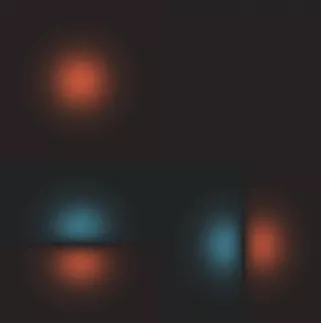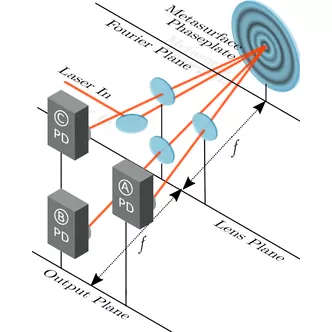Lasers support certain structures of light called "characteristic modes". An international cooperation group of experts in gravitational waves, elementary surfaces and photonics has pioneered a new method to measure the number of these characteristic modes with unprecedented sensitivity In the gravitational wave detector, several pairs of mirrors are used to increase the amount of laser stored along the detector's arm.
However, each of these pairs of mirrors has slight distortion, which will scatter the light from the perfect shape of the laser beam. This scattering will cause excessive noise in the detector, limit the sensitivity, and finally force the instrument to shut down.

Figure 1: false color image of the tested laser characteristic mode. The color of the phase light. Red is 0 degrees and blue is 180 degrees
From a recently submitted Research Report, Professor Andreas freise (from Vrije University in Amsterdam) said: "gravitational wave detectors such as LIGO, Virgo and kagra store huge optical power - in this work, we want to test an idea that let us amplify the laser beam and look for small swings of power that may limit the sensitivity of the detector."
Similar problems have been encountered in the telecommunications industry. Scientists hope to use a variety of characteristic modes to transmit more data along the optical fiber. Dr Aaron Jones, ozgrav researcher and lead author (University of Western Australia), explained. "Scientists studying telecommunications have developed a method of measuring feature patterns using simple instruments, but it is not sensitive enough for our purposes. We have the idea of using hypersurfaces and contacted partners who can help us make hypersurfaces."

Figure 2: schematic diagram of the instrument used by the researchers. F is the focal length of the lens
In this study, the proof of concept device developed by the team is more than 1000 times more sensitive than the original method developed by telecom scientists. Researchers will now seek to translate this work into gravitational wave detectors, where additional accuracy will be used to detect the interior of neutron stars and test the basic limits of general relativity.
Professor Zhao, chief researcher of ozgrav (from the University of Western Australia), said: "if we want to understand the interior of neutron stars, it is very important to solve the mode sensing problem of future gravitational wave detectors."